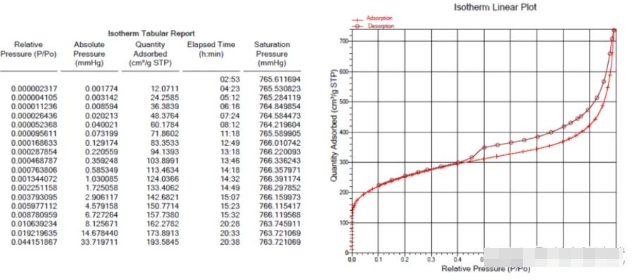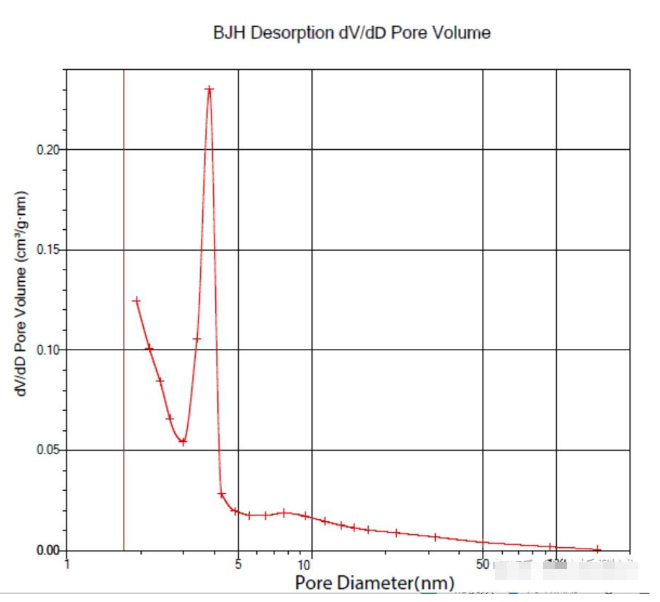BET Physicisorption Analyzer Applications and Specifications
The BET Physicisorption Analyzer is primarily used for analyzing the specific surface area and pore structure of porous materials. Leveraging the adsorption characteristics of solid materials, it employs gas molecules as "measuring tools" to quantify surface area and pore structure parameters, including specific surface area, total pore volume, pore size distribution, and adsorption-desorption isotherms.
Testing Services Provided:
- BET specific surface area and pore size analysis
Common Adsorbate Gases:
- Nitrogen (N₂), carbon dioxide (CO₂), argon (Ar), hydrogen (H₂), etc.
Measurable Pore Range:
- Micropores (φ < 2 nm)
- Mesopores (2 nm ≤ φ ≤ 50 nm)
Operational Modes:
- Mesopore Analysis Mode
- Provides adsorption-desorption isotherms, specific surface area, pore volume, and pore size distribution data within the mesopore range
- Full Pore Analysis Mode
- Includes data for both micropores and mesopores:
- Adsorption-desorption isotherms
- Specific surface area
- Total pore volume
- Pore size distribution
- Specific Surface Area Mode
- Exclusively provides specific surface area data calculated from p/p₀ values between 0.05-0.35
- Does not include isotherms or pore volume/size data
Sample Requirements:
- High Surface Area Samples (>500 m²/g):
- Provide >100 mg of sample
- Use the formula: Specific Surface Area (m²/g) × Sample Mass (g) = 15-20 m² to estimate required mass
- Final sample quantity determined by lab technicians

- Unknown Surface Area Samples:
- Full pore/micropore analysis: >100 mg required (if micropores are present)
- Mesopore analysis: >250 mg required
- Avoid using self-sealing bags for sample storage

- Physical Requirements:
- Powder samples preferred
- Granular samples must be ground to <3 mm particles
- Ensure homogeneous particle size distribution
Report Outputs:
- Adsorption-desorption isotherms
- Specific surface area (m²/g)
- Total pore volume (cm³/g)
- Average pore diameter (nm)
- Pore size distribution plots
Note: The BET method complies with ISO 9277:2010 and ASTM D3663-12 standards. All measurements are performed at liquid nitrogen temperature (77 K) unless otherwise specified. For volatile or hazardous materials, please provide safety data sheets (SDS) prior to testing.


